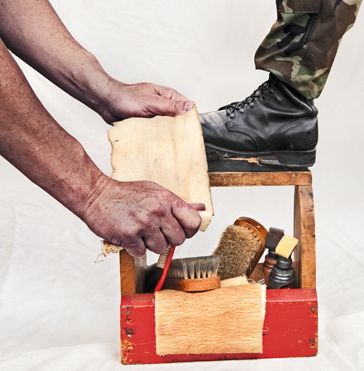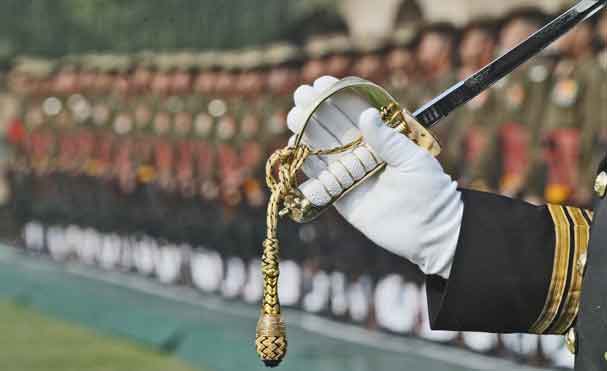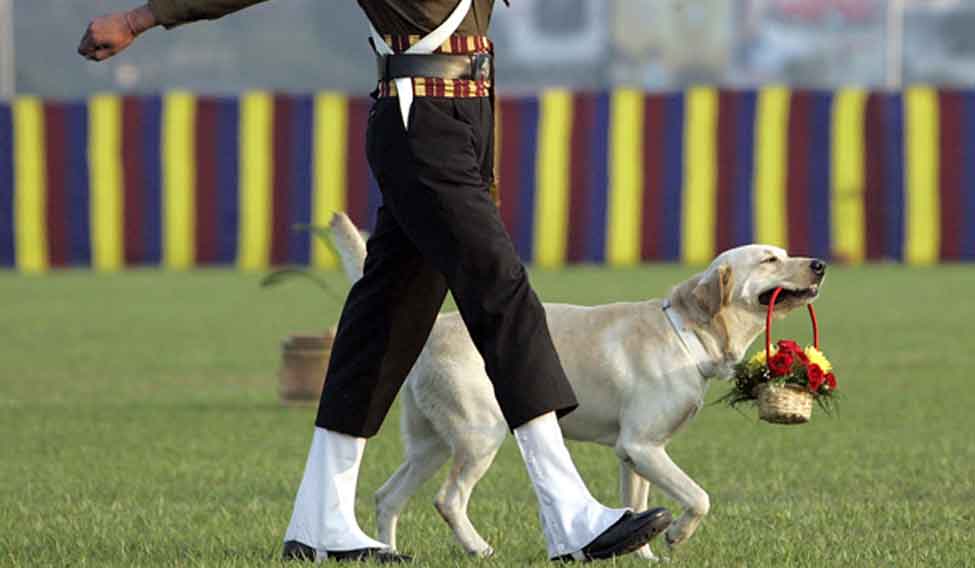Year 2012 is only half way through, but it already seems like the Indian Army’s annus horribilis. While every month brought with it fresh troubles for the force, from corruption scandals to warring generals, an incident that took place off a firing range in the small Ladakhi town of Nyoma on May 17 almost brought it to its knees.
When A.K. Sharma, Ankur Tewari, Kapil Malik, Thomas Verghese and A.D. Kanade, all major-rank officers of 226 Field Regiment, beat up Sharma’s sahayak, sepoy Suman Ghosh, for a slight to the officer’s wife, they also attacked one of the most enduring bonds that the Army had maintained for decades—the one between the officer and his batman. By the time the air cleared, the Army might have survived it, but one of its oldest institutions, the sahayak system, was irreparably damaged.
Every officer, on being commissioned into a regiment, is assigned an orderly, or sahayak, whose job entails looking after the officer and the upkeep of his uniform, weapon and equipment. In combat areas, the sahayak carries the officer’s equipment and works as his radio operator. “He is the one who looks after the officer’s kit, makes sure his stars are polished, his ribbons arranged properly. During military exercise, it is your orderly who draws your weapon and gets them for you, and he is your shadow,” says a retired brigadier, who fought the 1971 war shoulder to shoulder with his orderly. Once, when the sepoy was injured, the officer carried him on his shoulder for over 2km to safety. The sepoy went on to serve him for the next two decades. “Over years, the orderly becomes your shadow, your right-hand man who anticipates your needs and requirements even before they are articulated. These boys lay down their lives for their ‘saab’ if the bond is nurtured,” says the brigadier.
It is a relationship, as Defence Minister A.K. Antony described to Parliament, which “symbolises trust, respect, warmth, confidence and interdependence, which are fundamentals of the relationship between the leaders and the led.” At least, that was the principle on which the British introduced the practice. While much good still remains, the abuse of the practice has increased manifold over the decades. Today, the sahayak is viewed by many as a glorified domestic help rather than an official assistant to the officer. Interestingly, neither the Air Force nor the Navy follows this practice, and officers of a particular rank and above are provided with a cook and a steward who are civilians.
In 2010, a parliamentary standing committee on defence recommended that the Army abolish the ‘demeaning and humiliating’ practice of employing jawans as sahayaks to officers. Though the recommendation was dismissed by the defence ministry, the Army has come up with a proposal to replace the sahayaks with civilian appointees, namely Service Assistants and Non-Combatant Assistants. “We do not need the sahayak system, especially to serve the families of an officer which lives in a separated accommodation in metros while the officer is on a field posting. The system is a misuse of an individual. It compromises the dignity of a soldier trained in combat,” says Maj.-Gen. (retd) S. Thapliyal.

Much of the criticism of the practice comes from the fact that most sahayaks end up as housekeepers for the officers they are assigned to. From chopping vegetables to taking the dog for a walk, there is no task which an orderly is not expected to perform. “I remember our batman bhaiya making me wear my socks and shoes while I would munch on breakfast. He would hold my school bag while waiting for the school bus and would be there to carry it back for me when I returned. He would iron our clothes, take the dog for a walk, fetch goodies for us from the canteen and serve tea when guests came visiting,” says Shreya Gandhi, whose father was a senior Army officer.
For the Gandhis, their batman was a member of the family so much so that when Shreya got married, the keys to the trunk in which her trousseau, including the jewellery, were kept were with the orderly. “Today as an adult I realise that we made him do chores which a domestic help does. He was a trained soldier but we made him carry our school bags,” says Shreya.
Her father, a retired major general, however, bristles at any mention of ill-treatment. “It is difficult to explain the dynamics of this relationship to civilians,” he says. “The relationship between a sahayak and his officer is familial. He moves with the officer from posting to posting, station to station, even when the officer leaves the regiment. He is in charge of the movement of the luggage and the household. He is treated with the same respect that we accord each other in the family.”
Officers stress over how unfair it is to charge them with using the soldier as domestic help. “His primary duties, even when in a household, are to look after the officer’s kit, his uniform and his shoes. We have never used a sahayak in lieu of domestic help,” says a serving officer.
But the fact is, while there are gentlemen officers, there are many who make sahayaks do chores like sweeping, clearing the table, washing utensils and dusting. “There are 11 officers in my regiment currently,” says a young major posted in Ambala, Punjab, who is serving as an adjutant. “Out of 11, I know of four who don’t behave properly with the boys assigned to them. Some of the sahayaks have complained to me and I have changed the duty. But the problem remains.”
A sahayak is usually assigned by the senior-most JCO of the company. “The qualities which are usually kept in mind are amiability and the ability to handle the kit of the officer. And the jawan has the right to say no if he does not wish to be assigned to anyone,” says a colonel. But this is an option which is being offered only now. Even 10 years ago, it was unheard of a jawan refusing to do what he was asked to.
“But with a few exceptions, the majority of us never felt the need to complain. Yes, it was a different job from what we had signed up for, but we did not have complaints. For some of us it was an escape from the daily drudgery of a regiment life, especially when in a peace station,” says retired Havaldar Rajender Singh, who served the same officer for 18 years. His day would begin at 6:30 a.m., with taking the dog for a walk. “After that I would help with breakfast preparations for the children and the officer. Around 9 a.m. I would go for my own meal. Then it was time to supervise the maid and do odd jobs around the house, like ensuring the clothes had gone for ironing, the officer’s different uniforms were ready. Preparations for lunch would start around 12:30 p.m. and by 2:30 p.m. we would head back to our room for our lunch and rest. At 5 p.m., we would be back, first to serve tea to the officer and his wife, then to take the dog for a walk and then help with dinner.”
All in all it was a good 20 years. “I came to the family as a sepoy. My officer ensured that I retired as a havaldar. My leave requests were never turned down and I barely suffered the rigours of a tough posting. I was a family member, a part of their ups and downs. Whatever was cooked in the house, I got an equal portion of it. If there was a dinner party, we would eat the same food as the guests.” But yes, he says, there were bad days, too. “There would be a scolding, if it was thought that the work assigned was not done properly and some of them were unfair. But you swallow your pride and keep quiet.”
And then there are the tales which have passed onto the annals of legend, of the bond between an officer and his sahayak. Former Army chief General K.S. Thimmaiah’s batman Ram Singh once famously told the general that he too deserved the same medal as his saab since he had been with him to every place and every tight spot.
But for every tale of camaraderie there is a sordid one. “I was a houseboy in the household of the officer I was assigned to,” says a former sepoy. “I was supposed to be responsible for everything in the household, right from the morning tea to the clearing of dirty plates to sweeping. Scolding and abuses were par for the course. I barely had a minute to myself. Even if the family did not need me, I would still be made to wait around.” He stayed with them for two years before mustering up the courage to tell his regiment’s subedar major about the behaviour meted out to him.

What does not help matters is that there is rarely any action taken against an officer for ill-treating the sahayak. Though the Army Headquarters periodically issues notices to Army formations against using sahayaks for menial household work, they are rarely paid heed to. “There were many who never spoke out of fear of being punished for complaining,” says the sepoy.
Today, however, a soldier does not hesitate to speak up if he feels that a task being assigned to him is beneath his dignity. “My husband was doing his MTech. from IIT Roorkee along with a few other officers. One batman was assigned to a handful of us, who would come around for a couple of hours every evening. And every day it could be a different soldier. Once a boy refused to polish my husband’s uniform boots. As a lady, it was not my position to say anything to him and my husband respected his point of view,” says the wife of a colonel.
The troops today are better educated than they were a decade ago. Though the qualification for a sepoy still is a class X pass certificate (some technical arms insist on a class XII certificate), the Army draws graduates and postgraduates for the job. “Today, you have to treat your troops as your equal,” says a lieutenant colonel, who is scheduled to take over the command of his unit in a few months. He is insistent that the Army’s core values remain the same and a few bad eggs should not be the yardstick. He cites the example of a young major he met at a small peace station, who helped his sahayak crack the Services Selection Board exam.

“Pushpinder had cleared the Combined Defence Services written exam seven times but failed to crack the SSB. When he came to me it was his last chance,” says the major. “I conducted mock interviews with him, sent him to coaching classes in the evening and coached him. He cleared the exam.” His second sahayak is also undergoing the same drill. “My wife talks to him in English so that he picks up the language.” The changing nature of the Army is often attributed to the new generation of officers, most of whom belong to a socioeconomic background different from the earlier generation. The truth, however, is that there have always been good and bad officers. Some understood the ethos of the forces and some abused privileges. “In fact, today I see senior officers abusing this privilege more than youngsters,” says an officer.
The system is also suffering from lack of manpower. A trooper rather than being assigned to one officer is now circulated. “There is no permanency. Neither the officer nor the trooper feels the need to invest in the relationship.” And the clamour for the removal of this system is growing louder. The British army discontinued it decades ago and reports say Pakistan did away with it in 2004. “It is argued that when an officer is in the field, his family needs help for their chores. But does anyone ask who is helping out the sahayak’s family?” asks Thapliyal.
The Army spends a considerable amount of time and money in training a soldier, which, when he is enrolled as a sahayak, goes to waste. With the latest proposal to hire civilian assistants, it hopes to release 30,000 troops currently employed as sahayaks. It is now looking at hiring 2,358 SAs and 22,620 NCAs. The proposal, say reports, suggests providing SAs to all officers above flag rank (brigadiers and above) and regiment commanders in a peace station. It will end a tradition, but it will restore the self-respect of the troops.













